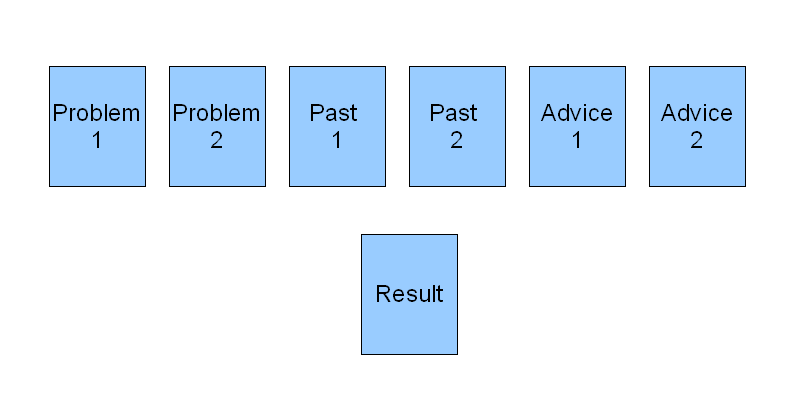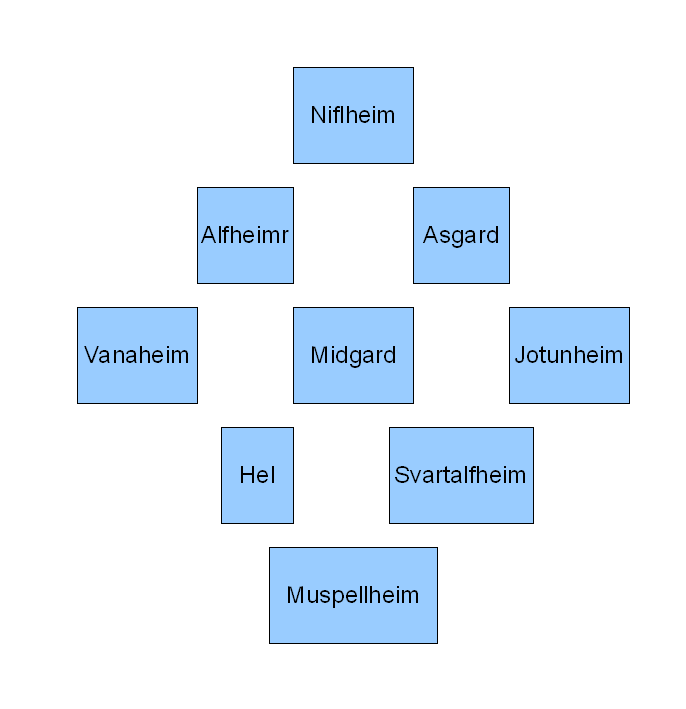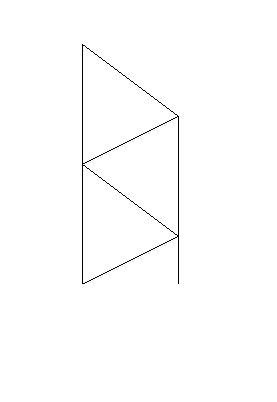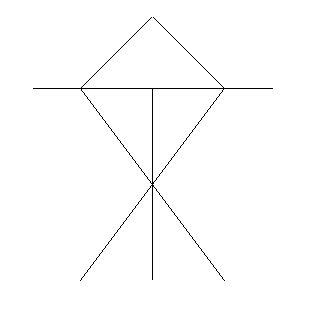Runic correspondences for technology.
| Rune | Correspondence | Discussion |
| Fehu | Paypal | Fehu is not just about wealth, but about the movement of wealth between people. Paypal (http://www.paypal.com) is an excellent symbol of this idea of money flowing freely between individuals. |
| Uruz | ESPN | When we think of Uruz, we typically think of strength, however, someone else pointed out that it tends to have a very masculine character about it. While somewhat stereotypical, when I think of that concept of that masculine strength, and the sense of macho, the ESPN web site comes to mind. |
| Ansuz | Ansuz represents sudden insight, or knowledge without work. Google, and in general search engines such as Yahoo, represent this ability to require knowledge “out of the ether.”
|
|
| Thurisaz | Virus protection programs | Thurisaz can be a rune of aggressive protection in addition to the rune of “hard times.” Thurisaz can threaten to destroy things that come to hurt you. With that idea in mind Virus protection programs, such as Macafee anti-virus are representative of Thurisaz. |
| Raidho | Domain Name Service | Raidho is about getting places without not caring how we get there. Domain Name Service, or the technology which converts names like google.com into something computers can use is an excellent representation of “getting there” without caring how. |
| Kenaz | Wikipedia | Kenaz represents knowledge gain through work, like academic knowledge. While Google allows us to quickly grab information out of the air, Wikipedia allows us to read, and do research, and study. |
| Gebo | Ebay | Gebo is the gift, and for anyone that’s been on the Internet for any period of time, they realize that shopping is a big “piece” of what happens on the net. So Online shopping represents Gebo. In particular, ebay is an excellent representation of Gebo. |
| Wunjo | Online Gaming | Joy, happiness, contentment. These are all ideas that surround Wunjo. However there’s also a side of Wunjo that warns us not to be come addicted to the happiness for its own sake. When we look at Online gaming and Online gaming addictions we see this, both people who find contentment, however also find them selves not progressing forward, because they are happy where they are. |
| Hagalaz | Computer Viruses | Hagalaz represents destruction, or hail. It represents the destructive forces of the universe. With this in mind, Computer Viruses and Trojans represent a force of Hagalaz. |
| Nauthiz | Electricity | Nauthiz is the rune of need, and the requirement that we work for our needs. When we think of this terms of modern technology, there’s one thing that makes all of this run, and that’s electricity. Electricity is the driving force behind all modern technology, as our needs often times are the driving force in our lives.
|
| Isa | Service Outages | Isa represents ice, and the dangers of ice, and our inability to complete the journey laid before us. When we think about the Internet today, and how its a driving force in much of what we do, Isa is well represented by Service outages. |
| Jera | Online Calendars | Jera represents the harvest, and the completion of projects. It signifies and end of one thing, and the progression onto something else. It also has a cyclic nature about it. Jera has a very strong tie to the concept of time, and the passage of time. With that Online Calendars are an excellent representation of Jera. |
| Eihwaz | The Internet Backbone | When we think of Eihwaz, we think of the tree Yggdrasil, and the strength of its roots, trunk and branches, and how it ties everything together. Without the tree, there is nothing. For this reason when we think about modern technology, and what binds it together, one can think of The Internet Backbone. |
| Perthro | Start up Internet Businesses | Perthro is the rune of mystery, its the dice up, it’s chance, its fate, it’s what keeps us on our toes. One could certainly see Internet Gambling as the ultimate techology dice cup. However, we can also think of Start up Internet Businesses as individuals who have choosen to toss the cup and see where fate takes them. |
| Algiz | Firewalls | lgiz represents protection like a shield. So when we think of algiz in terms of technology, concepts such as Firewalls is an appropriate representation of the concept of having that shield that protects you. |
| Sowilo | The Webby Awards | Sowilo often times represents honor bestowed upon people that’s of a non-monetary nature. It’s about looking good before others, and being recognized for the work that you do. With that The Webby Awards which recognize outstanding Internet achievements and innovative media is a representation of Sowilo. |
| Tiwaz | Digital Signatures | When we think of Tiwaz we think of two things, justice is the most common, however more importantly the concept of honoring agreements, and agreements between people is what is at the core of Tiwaz. When we think of technology we don’t think about agreements we’ve made very often. However, when we engage in commerce on the Internet, we make agreements all the time. For that reason Digital Signatures are an excellent representation of the agreements between men in the world of technology. |
| Berkano | Venture Capital Organizations | Berkano represents birth, and the beginning of new things. As we think about technology in modern times, we realize that most new technology comes through inspiration. However the inspiration alone is not enough. Just as childbirth is physically demanding, taking the inspiration of a technology and making it tangible for the world can be difficult. With this concept in mind, we turn to Venture Capital organizations that provide funding, sometimes in the most unusual of circumstances to technologies that otherwise might it in a garage never used. |
| Ehaz | Surfing the web | Ehwaz represent the horse, and the journey. As we think about modern technology and this concept of journeying, one thing comes to mind, and thats the endless clicking on link after link after link on web pages, wondering what you’ll see next. For that reason Surfing the Web represents this idea of Journeying. |
| Mannaz | Social Networks | Mannaz represents mankind, society, our reputation, and the relationships that tie us together outside of our hearth. Social Networks have allowed us to meet new people, from around the globe, and develop relationships, and establish a reputation within any given social network. |
| Laguz | WebMD | Laguz represents water, and the healing power of water. In today’s society we’re no longer dependent upon medical professionals to help us determine what may aile us. WebMD and other medical information sites have allowed us to determine our own process of healing, whatever that may be. |
| Inguz | Email and Instant Messaging | Inguz represent our choosen family, or our hearth. With today’s technology’s we have been able to extend this concept of family through communication, and for that reason, Email, and Instant messaging is a representation of Inguz. |
| Dagaz | Television | Dagaz represents the Phoenix, and the rebirth of something new out of something old. When we think about the development of technology, we rarely think of using old “stuff” and building on it to build something new. However, if we look at Television, and how its changed from being a medium of just a few channels, broadcast across the airwaves, to cable, high definition, and interactive in nature, we see that Television, in many respects, is trying to re-invent itself for modern society. |
| Othala | Network Firewalls | I’ve come to an understanding that Othala is not just about ancestral property, but it’s also about that line between the physical stuff that belongs to the family, and that which does not. For that reason, a network firewall, which serves as the guardian between our networks, and the networks of others, serves as a representation of Othala. |





 — Eihwaz stands for the Tree Yggdrasil, and the strength of a tree. When one thinks of the body, your spine is the trunk of the tree.
— Eihwaz stands for the Tree Yggdrasil, and the strength of a tree. When one thinks of the body, your spine is the trunk of the tree.  – Algiz is the elk, or the rune of protection, when you think of this rune, you should think of the prevention of harm. Algiz is upside down in this stav, to protect the base of the tree, and its roots. This is appropriate, as when we think of back strength, the lower back is often times where we have problems, and also lower back strength is critical to overall health of the back.
– Algiz is the elk, or the rune of protection, when you think of this rune, you should think of the prevention of harm. Algiz is upside down in this stav, to protect the base of the tree, and its roots. This is appropriate, as when we think of back strength, the lower back is often times where we have problems, and also lower back strength is critical to overall health of the back.  — Laguz represents the lake, and water, which feeds the tree Yggdrasil from the Well Urdr. Laguz represents healing and renewal. Laguz actually appears twice, once “upright” and once upside down in the rune.
— Laguz represents the lake, and water, which feeds the tree Yggdrasil from the Well Urdr. Laguz represents healing and renewal. Laguz actually appears twice, once “upright” and once upside down in the rune. 
 – Wunjo. This rune represents happiness. Certainly a healthy strong back can make one happy.
– Wunjo. This rune represents happiness. Certainly a healthy strong back can make one happy. 
 – Fehu is the rune of wealth, and the acquistion of material goods. It reminds us that the acquistion of cattle (money) is not the end but rather the start.
– Fehu is the rune of wealth, and the acquistion of material goods. It reminds us that the acquistion of cattle (money) is not the end but rather the start.  – Tiwaz is the rune of agreements and contracts. Here you’re hoping to enter into an agreement with your employer, where you provide them with work, and they provide you with money 🙂
– Tiwaz is the rune of agreements and contracts. Here you’re hoping to enter into an agreement with your employer, where you provide them with work, and they provide you with money 🙂  – Sowilo is the rune of recognition. While a job certainly has a Fehu component to it, it also has a component of recognition, that you, as a person, have value to whoever you are working for. While certainly money is one of our primary objectives in a job, recognition is as well.
– Sowilo is the rune of recognition. While a job certainly has a Fehu component to it, it also has a component of recognition, that you, as a person, have value to whoever you are working for. While certainly money is one of our primary objectives in a job, recognition is as well.  – Berkano is the rune of birth. It’s the rune of new directions, and things to come. When we think of Berkano we think of something new, that needs cared for, like a baby, or our new job.
– Berkano is the rune of birth. It’s the rune of new directions, and things to come. When we think of Berkano we think of something new, that needs cared for, like a baby, or our new job.  – Nauthiz represents need, and the things we need. In today’s society, we cannot survive without an income, and a job. The money that a job brings to us allows us to put a roof over our heads, feed ourselves and our family, and function within society. While we hope that our job will bring us more than our necessities, it does need to bring us enough money to satisfy our needs, whatever they are.
– Nauthiz represents need, and the things we need. In today’s society, we cannot survive without an income, and a job. The money that a job brings to us allows us to put a roof over our heads, feed ourselves and our family, and function within society. While we hope that our job will bring us more than our necessities, it does need to bring us enough money to satisfy our needs, whatever they are.  – Uruz Uruz represents the Aurochs, the large ox of the north. It represents productive strength, however, control of this strength is critical, because if the control is lost, the energy transitions from a productive one, to a destructive one.
– Uruz Uruz represents the Aurochs, the large ox of the north. It represents productive strength, however, control of this strength is critical, because if the control is lost, the energy transitions from a productive one, to a destructive one.  – Isa represents the ice, and the stillness of the ice and cold. When contemplating this section of the bind rune, one needs to be cognizant of the fact that there are times when “staying still and observing” are in fact, the proper actions.
– Isa represents the ice, and the stillness of the ice and cold. When contemplating this section of the bind rune, one needs to be cognizant of the fact that there are times when “staying still and observing” are in fact, the proper actions. 
 Kenaz – Kenaz represents the torch, and the torch of knowledge. As one learns to control ones rage, one should learn from it.
Kenaz – Kenaz represents the torch, and the torch of knowledge. As one learns to control ones rage, one should learn from it.  Inguz — Inguz represents family, and the caring of family.
Inguz — Inguz represents family, and the caring of family.  — Thurisaz represents thorns. By including Thursiaz in this bind rune one is asking the god to place thorns in front of those who wish to cause you harm.
— Thurisaz represents thorns. By including Thursiaz in this bind rune one is asking the god to place thorns in front of those who wish to cause you harm.  — Othala represents the physical stuff of the family, including the hearth. By using this rune, we’re not only asking for protection of ourselves, but also the physical property that makes up our family.
— Othala represents the physical stuff of the family, including the hearth. By using this rune, we’re not only asking for protection of ourselves, but also the physical property that makes up our family. 
